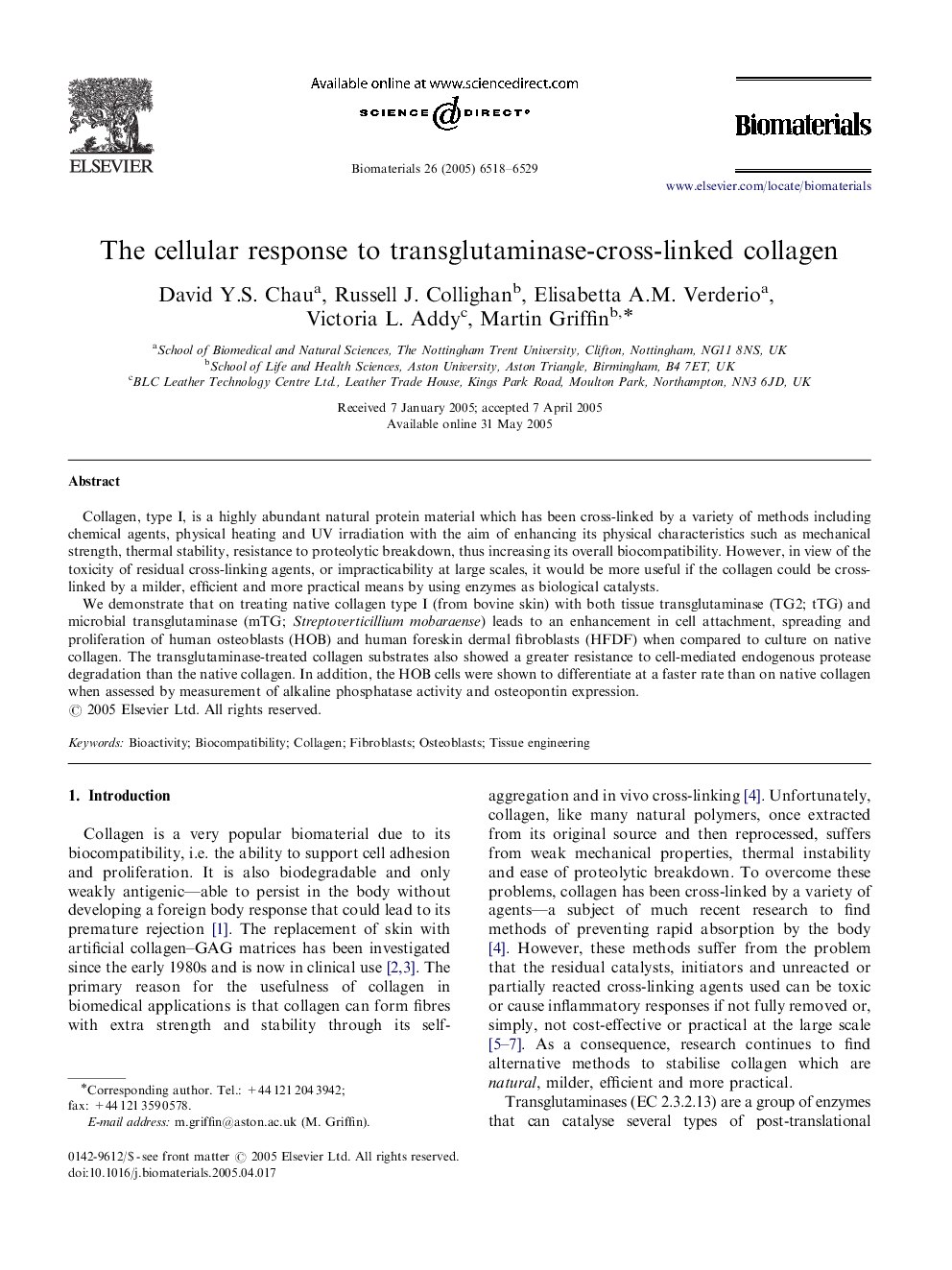| Article ID | Journal | Published Year | Pages | File Type |
|---|---|---|---|---|
| 10971 | Biomaterials | 2005 | 12 Pages |
Collagen, type I, is a highly abundant natural protein material which has been cross-linked by a variety of methods including chemical agents, physical heating and UV irradiation with the aim of enhancing its physical characteristics such as mechanical strength, thermal stability, resistance to proteolytic breakdown, thus increasing its overall biocompatibility. However, in view of the toxicity of residual cross-linking agents, or impracticability at large scales, it would be more useful if the collagen could be cross-linked by a milder, efficient and more practical means by using enzymes as biological catalysts.We demonstrate that on treating native collagen type I (from bovine skin) with both tissue transglutaminase (TG2; tTG) and microbial transglutaminase (mTG; Streptoverticillium mobaraense) leads to an enhancement in cell attachment, spreading and proliferation of human osteoblasts (HOB) and human foreskin dermal fibroblasts (HFDF) when compared to culture on native collagen. The transglutaminase-treated collagen substrates also showed a greater resistance to cell-mediated endogenous protease degradation than the native collagen. In addition, the HOB cells were shown to differentiate at a faster rate than on native collagen when assessed by measurement of alkaline phosphatase activity and osteopontin expression.
